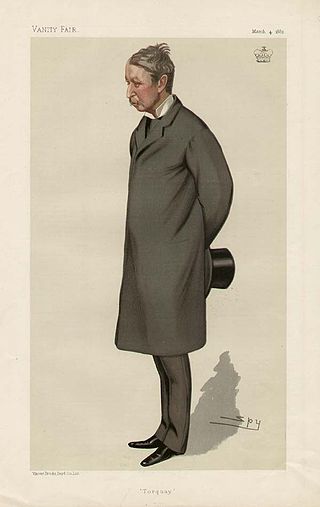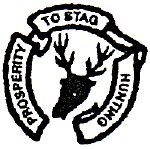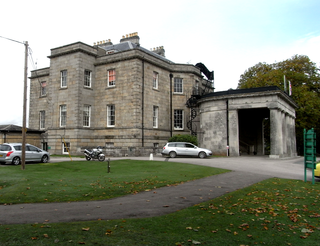
Fox hunting is a traditional activity involving the tracking, chase and, if caught, the killing of a fox, normally a red fox, by trained foxhounds or other scent hounds. A group of unarmed followers, led by a "master of foxhounds", follow the hounds on foot or on horseback.

A foxhound is a type of large hunting hound bred for strong hunting instincts, a keen sense of smell, and their bark, energy, drive, and speed. In fox hunting, the foxhound's namesake, packs of foxhounds track quarry, followed—usually on horseback—by the hunters, sometimes for several miles at a stretch; moreover, foxhounds also sometimes guard sheep and houses.

Beagling is mainly the hunting of hares and rabbits by beagles using their strong sense of smell. A beagle pack is usually followed on foot, but in a few cases mounted. Beagling is often enjoyed by 'retired' fox hunters who have either sustained too many injuries or lost the agility to ride horseback, or who enjoy the outdoors and the camaraderie of the hunt. It is also traditionally a way for young men and women to learn how to handle hounds on a smaller scale before they go on to hunt with foxhounds.

Drag hunting or draghunting is a form of equestrian sport, where mounted riders hunt the trail of an artificially laid scent with hounds.

The Haytor Granite Tramway was a tramway built to convey granite from Haytor Down, Dartmoor, Devon to the Stover Canal. It was very unusual in that the track was formed of granite sections, shaped to guide the wheels of horse-drawn wagons.

Lawrence Palk, 1st Baron Haldon, known as Sir Lawrence Palk, 4th Baronet from 1860 to 1880, was a British Conservative Party politician.

The Southern Hound was a breed of dog that existed in Britain probably until sometime in the 19th century, now extinct. The exact date of its extinction is not known; it is likely that it was gradually interbred with other breeds until the genuine Southern Hound bloodline ceased to exist.

Mordaunt Fenwick Bisset, of Bagborough, Somerset, was a British Conservative Member of Parliament and a famous west-country Master of Staghounds.

Edward Ewart Whitley was an English solicitor and Conservative politician who sat in the House of Commons from 1880 to 1892.

Herbert Whitley was a millionaire animal breeder who had a passion for breeding animals and plants, especially those blue in colour. His interests spanned livestock, pigeons, dogs, and exotic animals, many of which he kept in a collection at his house on the Primley Estate in Paignton, Devon.

The Quorn Hunt, usually called the Quorn, established in 1696, is one of the world's oldest fox hunting packs and claims to be the United Kingdom's most famous hunt. Its country is mostly in Leicestershire, together with some smaller areas of Nottinghamshire and Derbyshire.

The Cottesmore Hunt, which hunts mostly in Rutland, is one of the oldest foxhound packs in Britain, with origins dating back to 1666. Its name comes from the village of Cottesmore where the hounds were kennelled.
The Crawley and Horsham Hunt is a United Kingdom foxhound pack, with hunting country of around 23 miles by 20 miles within the ceremonial county of Sussex.

Fowelscombe is a historic manor in the parish of Ugborough in Devon, England. The large ancient manor house known as Fowelscombe House survives only as an ivy-covered "romantic ruin" overgrown by trees and nettles, situated 1 mile south-east of the village of Ugborough. The ruins are a Grade II listed building.

The red deer of Exmoor have been hunted since Norman times, when Exmoor was declared a Royal Forest. Collyns stated the earliest record of a pack of Staghounds on Exmoor was 1598. In 1803, the "North Devon Staghounds" became a subscription pack. In 1824/5 30 couples of hounds, the last of the true staghounds, were sold to a baron in Germany. Today, the Devon and Somerset is one of three staghounds packs in the UK, the others being the Quantock Staghounds and the Tiverton Staghounds. All packs hunt within Devon and Somerset. The Chairman as of 2016 is Tom Yandle, who was previously High Sheriff of Somerset in 1999.

George Templer was a landowner in Devon, England, and the builder of the Haytor Granite Tramway. His father was the second James Templer (1748–1813) who had built the Stover Canal.

John Crocker Bulteel (1793–1843) of Fleet, Holbeton, in South Devon, was a Whig MP for South Devon 1832-4 and was Sheriff of Devon in 1841. He was Master of the Dartmoor Foxhounds and bred the finest pack of hounds in England.

Stover is a historic estate in the parish of Teigngrace, about halfway between the towns of Newton Abbot and Bovey Tracey in South Devon, England. It was bought by James Templer (1722–1782) in 1765 and passed through three generations of that family before being bought by Edward St Maur, 11th Duke of Somerset in 1829.

The West Country Harrier, sometimes called Somerset Harrier, is a breed of scent hound from the south west of England that is used to hunt hare in packs. The West Country Harrier is often considered to be a variety of the more common Harrier breed, which is sometimes referred to as the Studbook Harrier.


















